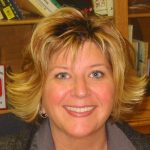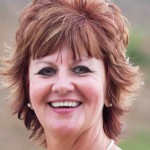 Why are people so good at that? Have you ever asked yourself why something seems easy or natural for others to do and yet, for you or a coworker in the next cubicle, that same task is difficult? Everyone has a combination of skills, strengths and knowledge that is unique to them and makes up their “character.” They use this combination daily to interact with coworkers and to accomplish their goals.
Why are people so good at that? Have you ever asked yourself why something seems easy or natural for others to do and yet, for you or a coworker in the next cubicle, that same task is difficult? Everyone has a combination of skills, strengths and knowledge that is unique to them and makes up their “character.” They use this combination daily to interact with coworkers and to accomplish their goals.
Employees who know their strengths and work from them tend to be among the highest engaged employees around the world. According to Gallup’s State of the Global Workplace Report, only 13% of employees worldwide are truly engaged at work. In spite of this knowledge, employee engagement has not increased significantly since 2009 when Gallup began reporting engagement worldwide.
Companies that fail to engage their employees are missing out on the powerful results that can come from engagement. Gallup studies show that businesses in the top quartile are 17% more productive, experience 70% fewer safety incidents, experience 41% less absenteeism, have 10% better customer ratings and are 21% more profitable compared to companies in the bottom quartile.
Gallup has identified a straightforward way businesses can get top notch results. Simply manage their workforce by focusing on their strengths! Employees who understand their strengths and apply them in the workplace have discovered a transforming effect on their lives and work. Employees who use their strengths daily are three times more likely to say they have an excellent quality of life and six times more likely to be engaged in their work.
There are numerous “self-assessments” available that focus more on an individual’s personality, or behavior style or preference. Some assessments assign you a color indicative of your personality or relate you to a certain animal, like a lion or an otter, based on behavior patterns. The highly-researched Myers-Briggs Type Indicator inventories psychological types in four dimensions, including: General Attitude (Extravert or Introvert); Perception (Sensing or Intuitive); Judging (Thinking or Feeling), and; Processing of Information (Judging or Perceiving). There are 16 distinct personality types.
The way we perceive, process, and implement information is important and worthwhile information. However, at the Alber Enterprise Center, we have seen a greater return on investment when employees learn to leverage their strengths. “For too long, performance evaluations focused on fixing weaknesses vs maximizing strengths. By exploring the gaps in which you naturally think, feel, and behave, the CliftonStrengths® can identify and build on the areas where you have infinite potential to grow and succeed,” states Gallup.
Gallup recently completed global research on companies that implemented strengths-based management practices. They discovered that 90% of the groups studied had performance increases at or above the following ranges:
- 10% to 19% increase in sales
- 14% to 29% increase in profit
- 3% to 7% higher customer engagement
- 6% to 16% lower turnover (in low turnover organizations)
- 26% to 72% lower turnover (in high turnover organizations)
- 9% to 15% increase in engaged employees
- 22% to 59% lower safety incidents
Even at the low end these are impressive gains. To help organizations achieve these outcomes, we encourage corporate and business leaders to consider what Gallup has discovered by studying thousands of work teams and millions of employees.
A focus on employee strengths proceeds from the simple notion that we are all better at some things than others and that we will be happier and more productive if we spend more of our time doing those things. Gallup has identified 34 work related strengths which they divided into four leadership domains:
Executing (make things happen)
Influencing (reach a broader audience)
Relationship Building (create entities greater than the sum of parts)
Strategic Thinking (focus on what could be)
The CliftonStrengths® assessment yields in-depth analysis of your Top 5 strengths. These highly customized insights will help you understand how each of your Top 5 talents play out in your life on a personal level, and what makes you stand out compared to millions of people they have studied.
If you or the organizations you work with are interested in learning more about discovering strengths, the staff at Alber Enterprise Center would be delighted to have further conversations with you.
 Gary Kuhn is an Organization Development Consultant with the Alber Enterprise Center located at The Ohio State University at Marion.
Gary Kuhn is an Organization Development Consultant with the Alber Enterprise Center located at The Ohio State University at Marion.



 One of the trickiest situations for a facilitator can be encountering and effectively handling disagreements among group participants. Making decisions in groups is difficult and often messy, but helping a group make complex decisions is one of the most important tasks of a facilitator. The lively discussion that is part of the group decision making process, however, often involves people who feel passionately about their ideas, and sometimes that passion can escalate to a discourse that is unhelpful at best, and can often be damaging to the group or individuals involved.
One of the trickiest situations for a facilitator can be encountering and effectively handling disagreements among group participants. Making decisions in groups is difficult and often messy, but helping a group make complex decisions is one of the most important tasks of a facilitator. The lively discussion that is part of the group decision making process, however, often involves people who feel passionately about their ideas, and sometimes that passion can escalate to a discourse that is unhelpful at best, and can often be damaging to the group or individuals involved. slow down the discussion by encouraging individuals to paraphrase what they are hearing each other say and allowing only one person to speak at a time.
slow down the discussion by encouraging individuals to paraphrase what they are hearing each other say and allowing only one person to speak at a time.

 A focus group is in essence a group interview based on a set of questions or discussion points. It is qualitative research designed to explore people’s opinions and attitudes. Focus groups ask open-ended questions and avoid questions that can be answered with yes or no answers. A typical focus group may consist of 6-8 people. A number of focus groups are usually conducted to get an ideal mix of information. Focus groups typically last 1-3 hours.
A focus group is in essence a group interview based on a set of questions or discussion points. It is qualitative research designed to explore people’s opinions and attitudes. Focus groups ask open-ended questions and avoid questions that can be answered with yes or no answers. A typical focus group may consist of 6-8 people. A number of focus groups are usually conducted to get an ideal mix of information. Focus groups typically last 1-3 hours. Focus groups tend to take place with a small sample size in an interactive group setting. They create a way to encourage participants to share ideas and express opinions and attitudes and are an effective way to facilitate open discussions and allow participants to express themselves deeper than a less personal survey, and dive deeper into certain issues.
Focus groups tend to take place with a small sample size in an interactive group setting. They create a way to encourage participants to share ideas and express opinions and attitudes and are an effective way to facilitate open discussions and allow participants to express themselves deeper than a less personal survey, and dive deeper into certain issues. The participants selected must be able to answer the questions and must be familiar with the topic discussed. Participants are selected based on criteria relevant to the organization/concept including existing or potential customers.
The participants selected must be able to answer the questions and must be familiar with the topic discussed. Participants are selected based on criteria relevant to the organization/concept including existing or potential customers. Cindy Bond
Cindy Bond In my own research comparing The BRIDGE Issue Management Process with other more basic problem-solving models, I determined that there are three features that differentiate our model. The BRIDGE:
In my own research comparing The BRIDGE Issue Management Process with other more basic problem-solving models, I determined that there are three features that differentiate our model. The BRIDGE: Myra Wilson
Myra Wilson What my team did was adopt Franklin Covey’s 7 Habits of Highly Effective People. We spent two days in a training learning about ourselves, our teams, and how to work more effectively with ourselves and each other. We learned in this training the 7 habits we can practice that will lead our lives down a less stressful path while maximizing our productivity. A couple of the habits I use every day are Be Proactive, Begin with the End in Mind, and my team often uses Synergize.
What my team did was adopt Franklin Covey’s 7 Habits of Highly Effective People. We spent two days in a training learning about ourselves, our teams, and how to work more effectively with ourselves and each other. We learned in this training the 7 habits we can practice that will lead our lives down a less stressful path while maximizing our productivity. A couple of the habits I use every day are Be Proactive, Begin with the End in Mind, and my team often uses Synergize.  In the book
In the book  The authors of Tribal Leadership contend, and my own observations support, that this is not a conversation that allows for or supports positive organizational change, and yet it is the most common conversation that happens in an organization. Instead, positive change occurs within the conversation of vision. This is where teams come together and take on industry standards as the competition, not other parts of their own company. This is not an easy shift to make, but it is essential for both personal and organizational growth. We see this in many industry-leading companies and most successful social movements.
The authors of Tribal Leadership contend, and my own observations support, that this is not a conversation that allows for or supports positive organizational change, and yet it is the most common conversation that happens in an organization. Instead, positive change occurs within the conversation of vision. This is where teams come together and take on industry standards as the competition, not other parts of their own company. This is not an easy shift to make, but it is essential for both personal and organizational growth. We see this in many industry-leading companies and most successful social movements.  Why are people so good at that? Have you ever asked yourself why something seems easy or natural for others to do and yet, for you or a coworker in the next cubicle, that same task is difficult? Everyone has a combination of skills, strengths and knowledge that is unique to them and makes up their “character.” They use this combination daily to interact with coworkers and to accomplish their goals.
Why are people so good at that? Have you ever asked yourself why something seems easy or natural for others to do and yet, for you or a coworker in the next cubicle, that same task is difficult? Everyone has a combination of skills, strengths and knowledge that is unique to them and makes up their “character.” They use this combination daily to interact with coworkers and to accomplish their goals. Gary Kuhn
Gary Kuhn Leadership! It is a basic fundamental need for any organization to perform at its best. And whether you want to learn more about public service or have thought about becoming more involved in your community, participating in a formal leadership development program may be helpful.
Leadership! It is a basic fundamental need for any organization to perform at its best. And whether you want to learn more about public service or have thought about becoming more involved in your community, participating in a formal leadership development program may be helpful. Recognizing the importance of the agri-business industry, the Ohio Sea Grant College Program and Ohio State University Extension partnered with Lake County organizations to carry out a Business Retention and Expansion (BR&E) Program. Local partners included: the Lake County Soil and Water Conservation District, Lake County Development Council and Ohio Farm Bureau. As a result of this local applied research effort, the local partners and other community leaders are better able to assist ag-focused businesses in the area to achieve their growth objectives and to improve the overall business environment for Lake County’s agri-business industry.
Recognizing the importance of the agri-business industry, the Ohio Sea Grant College Program and Ohio State University Extension partnered with Lake County organizations to carry out a Business Retention and Expansion (BR&E) Program. Local partners included: the Lake County Soil and Water Conservation District, Lake County Development Council and Ohio Farm Bureau. As a result of this local applied research effort, the local partners and other community leaders are better able to assist ag-focused businesses in the area to achieve their growth objectives and to improve the overall business environment for Lake County’s agri-business industry.